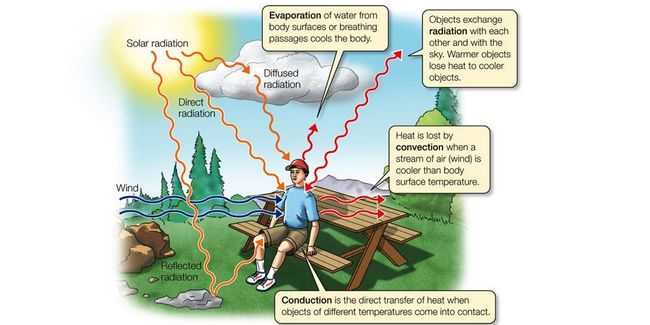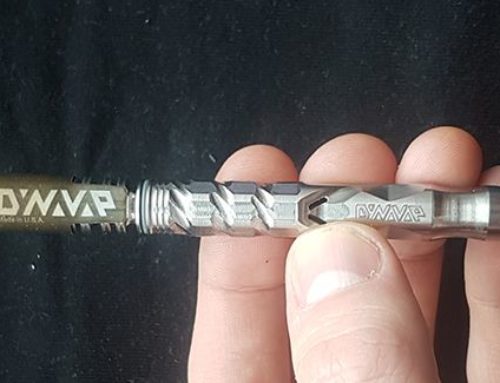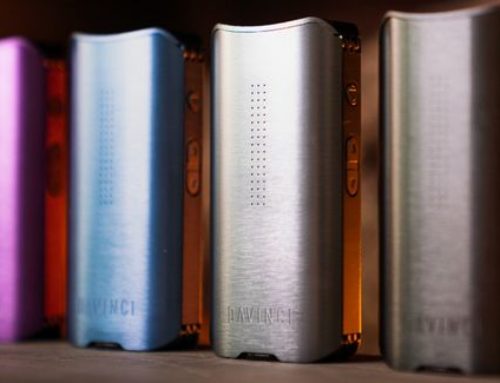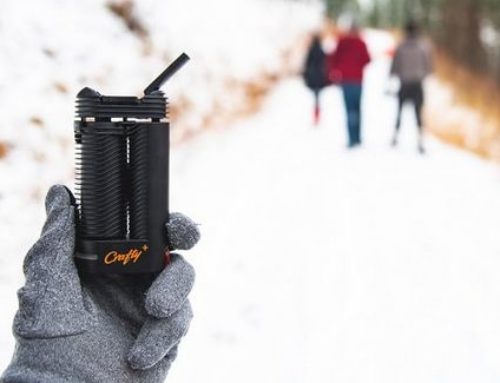As you already know, a dry herb spray is a device that heats aromatic or medicinal plants to a temperature lower than that of cellulose combustion (231oC).
The heated plants, herbs and plant extracts can release their active ingredients in the form of steam (sublimation) without generating the thousands of toxic gases associated with combustion!
You can therefore, thanks to this simple principle, enjoy the many benefits of a wide range of herbal medicine plants without the negative impact on your health.
But do you know that there are several ways to heat plants or plant concentrates with ultimately different characteristics and a surprisingly different result?
So what are the different types of heaters?
To begin with, you should know that directly passing a molecule from solid to gas is called "Sublimation"!
This is exactly what happens when you use a vaporizer…. The sublimation of molecules contained in plant matter in the form of steam!
There are of course a multitude of molecules in each plant that have a different melting temperature (vaporization).
It is now easier to understand why the effects and aromas will be different depending on the temperatures and heating patterns used!
The vaporizer with conduction heater
With conduction vaporization, the plant material comes into direct contact with the heating element in order to extract the active ingredients of the plants in the form of steam.
Sprays that use conduction heating can sometimes be a little tricky to use,
Indeed, as the plant material comes into direct contact with the heating element (bol), temperature control can be difficult…
Let's take the example of 2 well-known conduction vaporizers!
– The Smoke Bubble Vaporizer or Vapo2 (Vapo bulb
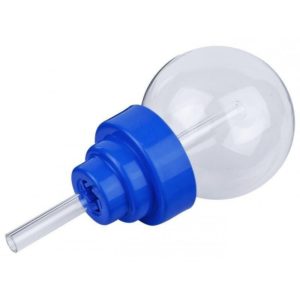
)
vapo2: conduction vaporize
This is the "0" degree of conduction vaporization.
Indeed, it is a simple glass bulb with a suction tube that stands out.
So we place vegetable matter inside the bulb vapo and heat ….
But how long will you tell me??!?
And then I'll say, "Get out of here!" Laughing out loud
Not that I'm particularly rude or don't want to help you, but it will be extremely difficult to apply a temperature suitable for vaporization.
Either we don't heat up enough and there will be no steam.
Either we heat too much and "oh woe" the plant will go into combustion or pre-combustion and become black …
Arfff is deg…
From time to time, by chance or because you are extremely gifted, you will get a perfect temperature and enjoy a beautiful steam full of aromas! The kif !!!

how smoke bubble vaporizer works by conduction
It is clear that there are two problems with this conduction vaporizer.
– The first problem is not directly related to the conduction but to the fact that there is no effective temperature control.
– The second problem, which is directly due to conduction, is related to the inertia of this heating system.
Indeed, the vaporizer will heat up pretty quickly and put on the other hand quite a time to cool, but the worst is that it can still rise in temperature while you have stopped heating it …
But then, what would the ideal conduction vaporizer look like?
It would have to rise quickly in temperature, stop its rise in temperature quite quickly when you stop the heating and finally it goes down very quickly!
– Dynavap vaporizer (M, Omnivap, Ti Woody, Nonavong…)
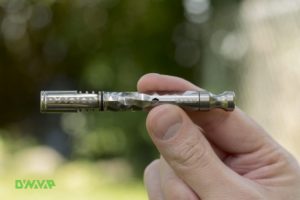
Dynavap omnivap vaporizer by con
Regardless of the model, all Dynavap portable vaporizers work the same way.
To simplify, Dynavap conduction vaporizers are, a metal tube (Inox or Titanium) or you can vacuum with a small bowl to put the plant material.
Around this bowl, we heat a small metal accessory called "The Cap"!
The originality of Dynavap vaporizers comes from this accessory called "LE CAP" or "Casquette" in French but it's really lame …
The Cape that heats up with the lighter to the peculiarity of making "CLIC" when the temperature is reached and another "CLIC" when the temperature is quite low !!!
In addition, depending on where the flame is applied, the heating temperature can be controlled!
The properties of stainless steel and especially Titanium make the temperature rise and fall very quickly in order to maximize control.
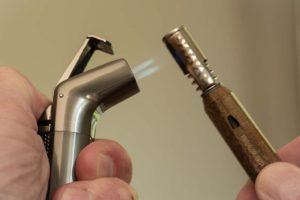
CAP Dynavap heats
Long live the conduction!
The vaporizer with convection heater
With convection spraying, it is by passing hot air through the plant material that the active components of the plant to be vaporized are extracted and the plant material does not affect the source of heat.
There are two types of convection spray: whip and pulsed air.
The Whip-style vaporizer requires the vapophyle to inhale through a tube (whip), sucking hot air from the heat source through the vaporizer to the vaporizer.
Models with pulsed air use a wind tunnel that propels hot air through the plant, creating a flow of air laden with active ingredients that will gradually fill a bag also called "balloon".
It is logically understood that with convection, it will take long enough for the warm air to have time to extract sufficiently the active ingredients contained in the plant.
Another important thing to consider with convection!
The suction power directly impacts the amount and density of steam generated.
Let's take a simple example!
You're in the car in the summer, and it's over 30 degrees!
1 – You are at a standstill, you open the window and put your arm out.
As a result, you'll find that it's over 30 degrees… RAS lol
2 – You are at 80km/h (the law has just changed… please no speeding!), you open the window and put your arm out.
As a result, you create a movement of air, like wind, that refreshes you!
3 – You are at 250km/h on a national, in reverse direction, and you are being chased by the police. You open the window and put your arm out.
As a result (by which you're going to get busted), the air movement you create is such that you're going to get the dying!
Convection spraying is the same!
The slower you inhale, the more the airflow will maintain the original temperature.
Conversely, the more you inhale, the lower the air temperature!
It should also be noted that convection heating requires a further crumbling of the plant (grinder, grass mill) than with conduction so that the air circulates efficiently through the plant!
Like conduction, convection also has its limits.
Let's take the example of 2 well-known convection vaporizers!
– The CFV Boundless
The CFV Boundless vaporizer is a good example of a 100% convection spray missed.
Indeed, it is necessary to suck very slowly for 3 pellets and risk death by suffocation to ultimately have just a small "proute" of steam. stingy!
I don't really know why, you'd probably have to be an engineer to understand that but for me, it's not at all effective and controlled.
They had the concept "vaporizer by convection" is already that but in the end ….
– The VapexHale Cloud Evo
Ah the Vapexhale… just talking about it the emotion takes me and a little tear flows down my cheek!
The ultimate CONVECTION vaporizer… What a killing this vapo!
One can, if one wishes, extract everything in one puff, two puffs…
But nothing prevents you from spraying for more than 15 minutes by generating maximum steam!
Believe it or not, the plant is not even dark brown in the end!
In short, the Vapexhale, we do what we want thanks to its wonderful heating system 100% convection.
In short, the air passes through a long glass tube and goes up the vapo to pass through a small metal basket filled with plants.
This glass tube called "bamboo" is surrounded by a coil that allows a perfectly homogeneous heating!
Long live the convection!
The vaporizer with radiation/Radiation heater
Radiation vaporization is when the plant material is not in direct contact with the heating element.
On the other hand, it is close enough to receive radiation.
This widespread mode of heating is often likened to conduction because in the end it has almost all its characteristics.
Conduction or convection? The big question!
With modern technologies, able to operate these 3 types of heaters well, it is essentially a personal preference choice, but the vast majority of herbal vaporizers are a mix between convection and conduction.
Very few vaporizers have an exclusive heating mode.
Firstly because it is very difficult to obtain and in addition, it is ultimately better to keep the best of each technique!
If you use a convection chamber, you may need to grind the herbs very finely (with what is called a Grinder) in order to get the best vaporization experience.
Fine grinding, however, is not as important for conduction-style vaporizers.
One thing is certain… It is whether it is convection or conduction, the vaporizer avoids the negative effects of combustion on health!!
Good vapes!!!!

